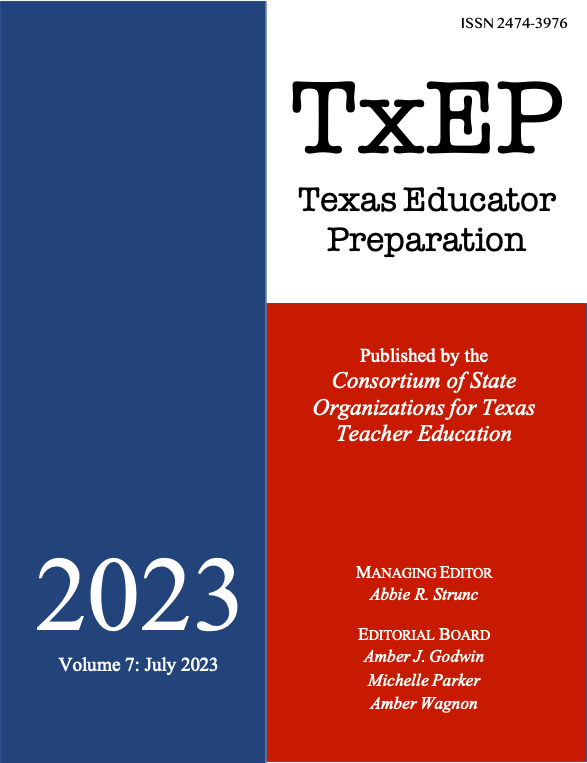Forging New Ground as Clinical Faculty
DOI:
https://doi.org/10.59719/txep.v7i1.7Abstract
Clinical faculty in universities must strive to create balance. Some clinical faculty are expected to develop teaching, service, and scholarship as part of their position while other clinical faculty positions only require teaching and service; scholarship is not an expectation. The expectations put forth to clinical faculty can feel unclear and frustrating. The goal of this piece is to provide perspective and clarity for those who are seeking it in the world of what it means to be clinical faculty in an education preparatory program.
Downloads
References
Adler, P. A., & Adler, P. (1987). Membership roles in field research. Sage.
Creswell, J. (2016). 30 essential skills for the qualitative researcher. Sage.
Hackmann, D. G. (2007). Roles and responsibilities of clinical faculty in selected educational
leadership programs. Planning and Changing, 38(1/2), 17–34.
Holmes Group (1995). Tomorrows schools of education. The Holmes Group.
Krippendorff, K. (2018). Content analysis: An introduction to its methodology. 4th ed., SAGE
Publications, Inc.
Miles, M. B., & Huberman, A. M. (1994). Qualitative data analysis: An expanded sourcebook
(2nd ed.). Sage.
Teddlie, C., & Yu, F. (2007). Mixed methods sampling: A typology with examples. Journal of
Mixed Methods Research, 1, 77-100.
Young, M. D., Petersen, G. J., & Short, P. M. (2002). The complexity of substantive reform: A
call for interdependence among key stakeholders. Educational Administration Quarterly,
, 137–175.





